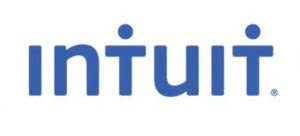
You’ll receive money before your customers pay their outstanding invoices. Instead of getting payments from your customers, you’ll get your money from a lender almost immediately. This way you won’t need to wait around for your customers to pay, potentially allowing you to invest and grow your company faster. In this case, as with all types of financing, the stronger your business’s qualifications, the more likely you are to access invoice financing with the most ideal rates and terms. With invoice discounting, the lender will advance the business up to 95% of the invoice amount.
Invoice financing process in detail
With invoice financing, you pay for fast and immediate access to your capital, freeing up your cash flow that’s being held up in unpaid invoices. Similar to small business loans, financing companies will have various requirements for your application. But the unpaid invoices that you currently have will be the most important factor.
- These fees may be called a processing fee, discount rate or factoring rate and are usually a percentage of the invoice amount.
- But this compensation does not influence the information we publish, or the reviews that you see on this site.
- While it’s not specifically expense management software, you can use the platform for your spend management needs.
- It offers a more accessible alternative to traditional loans, as the focus is on the creditworthiness of the customers rather than the business itself.
- Second, consider the cost, since invoice financing comes with fees.
Is invoice financing easy to get?

Alex runs a small manufacturing company and just billed a client R10,000 for finished goods. He submits a copy of the invoice to his invoice financing company and they send him a R7,500 advance immediately, which is equal to 75% of the invoice — a typical advance percentage. invoice financing When Alex gets paid by his client, the money goes straight into a trust account with the finance company. They deduct a 2% financing fee, which works out to R200, and send Alex the remaining R2,300. This makes it easy for customers to pay, no matter what methods they prefer.
- We’ll take a look at how invoice finance works, examples, and how it provides a cushion during sluggish customer payment cycles.
- Invoice discounting is a type of invoice financing where a business retains control over collections and customer relationships.
- Though the government has set up programmes to address MSMEs grievances on delayed payments (i.e., the MSME Samadhaan portal) it’s always advisable to know about your funding options.
- Invoice discounting means borrowing against unpaid invoices that are owed to you in order to receive your money faster.
- You typically need good credit, such as a FICO score of 670 or higher to qualify.
Invoice financing vs. invoice factoring

QuickBooks can help you create invoices quickly and get paid faster – check out our invoicing services for small businesses to learn more. These types of arrangements are particularly well-suited to industries where long payment terms and late payments are the norm. Businesses such as wholesalers and recruiters that have to buy stock and pay staff while they wait for payments to be made by their customers are particularly well-suited to this type of funding. Business owners looking to preserve ownership and avoid diluting equity might find invoice financing a preferable option. It allows access to funds without having to give up a stake in your business. Every time sales come in, it feels like the money goes directly to paying off ad campaigns or suppliers, meaning your cash is always tied up.
It connects to many ecommerce platforms, accounting software, and invoicing tools, including Invoice Simple. PayPal also offers purchase protection, which helps customers and businesses avoid fraud. Qualifying for invoice financing usually requires businesses to have a track record of issuing invoices to creditworthy customers. Financing companies assess the creditworthiness of the invoices and the reliability of the customers. How it works, how it is calculated, an example to understand invoice financing. Comparison of invoice financing with other alternatives, namely invoice factoring and bill discounting.
Benefits of Invoice Financing for Small Business
When you sign on to work with a factoring company, they pay you for the invoice and take on the responsibility of collecting payment from the client. The main criteria considered used to determine if a business can qualify for accounts receivable financing are the creditworthiness of their customers and the amount of time the invoices will be out for. Generally, the more reputable a business’s customers are, the more likely the business will be qualified to use invoice lending. Just like other forms of business loans, invoice financing is not for everyone. Take a look at the pros and cons of invoice financing so you can weigh your options and make informed financial decisions for your company. The main benefit of accounts receivable financing is that it frees up the cash tied to your outstanding invoices.
For example, simply upload or email an invoice, and the software will automatically extract details and populate fields for your approval. The platform can also detect duplicate invoices, helping you stay in control of your expenses and avoid costly errors. Spendesk is a spend management platform with accounts payable features like invoice automation and approval workflows, giving you greater control over the invoicing lifecycle and your AP processes. By using Spendesk, you can minimise (or eliminate) manual data entry for your invoicing processes, plus get real-time insights into your spending patterns.
Sustainability at Allianz Trade: standing by our commitment to decarbonization
- If you want to learn more about invoicing, visit our small business blog.
- For example, in our previous example, Company A could have sold its due invoices of ₹2,00,000 to a lender, before its 90 days timeline, at a discount.
- In the business world, many companies lack oversight of pricing agreements and fail to benchmark what they are paying versus current market rates.
- Meanwhile, you’ll get back more time in the day to focus on what you most love about running your company, whether that’s marketing your product, interacting with customers or finding ways to scale.
- But fees easily get expensive compared to conventional business loan interest rates.
- But larger businesses with annual revenue in the billions could stand to lose millions or tens of millions of dollars a year.
- There are several fees to be aware of with invoice financing facilities.
Invoice financing can be an excellent solution for small businesses facing cash flow issues due to delayed customer payments. It provides immediate liquidity using outstanding invoices as collateral, thereby helping businesses manage expenses or seize growth opportunities. It’s typically faster and more accessible than traditional loans, with approvals usually granted within days. Invoice https://www.bookstime.com/ financing (also called accounts receivable financing) is one of the most popular small business loans that allow businesses to use unpaid invoices as collateral in exchange for upfront cash. Invoice financing companies advance 80% to 95% of the total invoice value upon approval. Once your customers pay their dues, you’ll receive the remaining 5% to 20% (minus a small transaction fee).
How to finance your invoices with Juni
With invoice factoring, you actually sell your invoices to the invoice factoring company at a discount. Invoice financing is a type of alternative business loan not usually found with traditional banks and credit unions. Also called accounts receivable financing or invoice discounting, it uses your outstanding invoices to secure a loan from the lender. Invoice factoring companies provide a valuable service to businesses by offering immediate access to cash flow without taking on additional debt.



